| View previous topic :: View next topic |
| Author |
Message |
marvinlewinsky
Joined: 04 Feb 2020
Posts: 36
Location: Seattle


|
 Posted: Feb 22, 2020 18:30 Post subject: Taking great photographs Posted: Feb 22, 2020 18:30 Post subject: Taking great photographs |
|
|
Taking Great Photographs
Now that I have a dozen fine minerals in the small cabinet to cabinet range, I want to take some really great photos for my pleasure and to post on FMF.
I have reviewed the articles and books on the subject, but I think a video showing the stages in getting a great photo would be far better than a few pictures in a book. I have looked at the various set-ups some of the established mineral photographers use – and it is not your proverbial rocket science.
I know some might say it is very artistic – you need an artistic flair – its art not science - but I do not think so. I have no wish to create music like Mozart or paint like Da Vinci – true artists – but I think there are some basic rules to get great photos.
So has anyone ever produced a video on the subject?
|
|
| Back to top |
|
 |
Matt_Zukowski
Site Admin
Joined: 10 Apr 2009
Posts: 737
Location: Alaska



|
 Posted: Feb 22, 2020 19:18 Post subject: Re: Taking great photographs Posted: Feb 22, 2020 19:18 Post subject: Re: Taking great photographs |
|
|
If you search youtube for "mineral photography" you will find a couple videos that, although not step by step tutorials, give you a sense of what is involved. Also do an image search on google for Joaquim Callén and you will find pictures of Joaquim's nice little rig for shooting pictures.
For me the steps are:
1) Setup the mineral and the camera so that you have the shot you like.
2) Use lights and reflectors to "get the light around the specimen," making sure there is enough light to bring out all the faces or details you want to see but not so much light that any faces are "blown out" by too much light. This is why you see people using reflectors - they reflect some but not too much light. This step takes a lot of time and trial and error. I have my camera hooked up to my computer so i can see the results right away.
3) Some photographers, once they have the mineral "staged" as discussed in step 2), just take one picture of the piece. I find that, with my 105mm macro lense, i often can't get the entire piece in sharp focus. So i take a number of photos at different depths of focus (i focus on the closest part of the rock, then a part that is further away, and on until the last photo is focused on the furthest part of the rock), and then use the focus stacking function of photoshop to combine all those photos into a single jpg.
I put the procedure for focus stacking on the following FMF page:
https://www.mineral-forum.com/message-board/viewtopic.php?p=26280&highlight=focus+stack#26280
I hope this helps.
|
|
| Back to top |
|
 |
Pete Richards
Site Admin
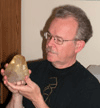
Joined: 29 Dec 2008
Posts: 846
Location: Northeast Ohio



|
 Posted: Feb 22, 2020 21:11 Post subject: Re: Taking great photographs Posted: Feb 22, 2020 21:11 Post subject: Re: Taking great photographs |
|
|
I think asking for a video is the wrong way to go. If there is one, it is not going to help you a lot. Trial and error, and learning from the error, is a major piece of becoming a good mineral photographer. Thank goodness we don't still have to pay the cost of the film for the many bad results.
What we see with our eyes is not what the camera sees, because it only has one eye. What we see in the camera viewscreen may seem like what we see when looking directly at the specimen, but the photo/image often turns out disappointing. It's almost all in the lighting, which is ultimately what makes a two-dimensional picture of a three-dimensional object look three dimensional.
As we hold and turn and inspect a specimen, we can take in many aspects of it - its architecture, its crystal form and the sharpness (or not) of the crystal faces, its transparency, its internal fractures and perhaps color changes from surface to depth. These compete for attention in a still image, and you have to decide which you want to show, and in what balance.
Good photographers that I know spend tens of minutes to an hour or more fiddling with their multiple lights and little reflectors and diffusers trying to get the light just right. It would make a boring video! They take multiple images with different lighting, go back to the computer, study them all, and select the best ones. Or go back to the photo stand and try again.
Occasionally, you put the specimen down and the light is just right and click! you are done. Very occasionally. Perhaps more often, what appeals to the eye just will not submit to photography, except perhaps for the best pros.
This is a complex, iterative, and experience-based art. The best way to get into it is to get into it, look at your results critically, try to see what is wrong and right with them, and try again. Showing your better (and perhaps worse) images to experienced mineral photographers can yield valuable advice.
_________________
Collecting and studying crystals with interesting habits, twinning, and epitaxy |
|
| Back to top |
|
 |
marvinlewinsky
Joined: 04 Feb 2020
Posts: 36
Location: Seattle


|
 Posted: Feb 22, 2020 21:46 Post subject: Re: Taking great photographs Posted: Feb 22, 2020 21:46 Post subject: Re: Taking great photographs |
|
|
I am thinking about creating a mineralogical record of my collection as it proceeds. It will include some information on the source of the mineral (vendor) and why it appealed to me, along with a little about the mine from which the piece was extracted. Perhaps include a few photos of the mine too. Such a mineralogical cornucopia would be of great interest to my grand-children who are also fascinated by minerals.
I have reviewed about 500 mineral photos by the ‘professionals’ and I have paid particular attention to the color of the background for each type of mineral photographed and the lighting conditions. I have also downloaded a few photographs of the set-ups used by the ‘professional’ photographers. It is noteworthy that the equipment and the selection of background colors seem standard across a lot of photos from many different photographers. Most seem to use a dark background with the specimens on a sheet of glass with light from the top and towards the back of the photographer. There is abundant use of shading and reflectors too (sheets of paper or plastic) to control and direct the light.
They say a photo is worth 1000 words, but I feel that a video is worth 1000 photos. It would be nice to see how Jeff Scovil produced the photos for the latest edition of Rocks and Minerals – the one about World Class Minerals. A video on just one, say a nice Native Copper would be very informative.
|
|
| Back to top |
|
 |
basti
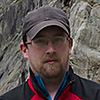
Joined: 29 Mar 2012
Posts: 27
Location: Brno, Czech Republic


|
 Posted: Feb 23, 2020 06:37 Post subject: Re: Taking great photographs Posted: Feb 23, 2020 06:37 Post subject: Re: Taking great photographs |
|
|
Well, I'm partially a pro photographer, so I might help a little here:
1) Yes, good workshop (e.g. with Jeff Scovil) helps a lot. You can save a LOT of time, the same is true for information articles, videos, forums etc. However, it does not mean its easy because of the following points:
2) Buying good camera is not the final step. You have to learn how to use it, its not like click with the phone. Mirrorless/DSLR systems are very sensitive to the wrong settings/conditions like bad aperture, bad ISO, shaky tripod, light reflections etc.
3) Absolutely forget the option of not editing the final photos. That means learning some good editing tool, preferably able to handle RAW files. So something like RAWTherapee + GIMP or Adobe Lightroom/Photoshop, Photopea etc.
4) Then there is advanced photography with the photo stacking, exposure blending, shooting macro with FOV below 1 cm etc.
It takes a lot of testing and trying before you find your own optimized way. Sure, a good tutorial or workshop can cut 80 % of useless and time consuming "self-teaching". I would personally start with the white or black background as it is generally much more easy than gradient backgrounds (aka Scovil style).
For basic shooting I do single shots (usually no stacking) on black painted glass, that is very fast and easy. I often use natural diffused light (cloudy days) + one simple reflection plate made of cardboard and aluminum foil. I highly recommend using circular polarizer filter (CPL) to remove reflections on the glass and get much better looking minerals, this can not (!) be fixed by any editing software.
Volker Betz wrote a very good article about focus stacking for super macros, but I think this is very complicated for most people and requires an insane amount of time and pretty high budget too: https://www.mindat.org/article.php/2709/Focus-Stacking+in+the+Camera+using+a+Macro-Lens
For gradient backgrounds, look for the profile of Yasu Okazaki on Facebook, he has some detailed setup photos there. Also you can look for Jeff Scovil's setup on Google.
There is tons of info on the Mindat forum, Strahlen.org forum and of course here. It takes a lot of time to read it, test, find what fits your needs. The bad part is that the good photography skill is the minimum starting point, if you never did photography with mirrorless/DSLR and never touched Photoshop, it will take at least year to get some decent results.
|
|
| Back to top |
|
 |
Le Snelling
Joined: 31 Oct 2018
Posts: 5
Location: Silverton Oregon


|
 Posted: Feb 23, 2020 10:53 Post subject: Re: Taking great photographs Posted: Feb 23, 2020 10:53 Post subject: Re: Taking great photographs |
|
|
I don't know of any video. However, Jeffrey Scovil has produced a great how-to book entitled, "Photographing Minerals, Fossils, & Lapidary Materials". The publishers is Geoscience Press, Tuscon, AZ. ISBN 0-945005-21-0 (hardback).
It covers just about every aspect of still photography of minerals that you or I as amateurs could imagine.
Recently, I have been taking specimen photos for very general purposes with my iPhone 11 with rather good results. Not worthy of publication but they make me happy. Oh I can feel the affectionatos out there cringing and grinding their teeth.
Above all display and enjoy your minerals!
|
|
| Back to top |
|
 |
Jordi Fabre
Overall coordinator of the Forum

Joined: 07 Aug 2006
Posts: 5076
Location: Barcelona



|
|
| Back to top |
|
 |
Jesse Fisher

Joined: 18 Mar 2009
Posts: 639
Location: San Francisco



|
 Posted: Feb 23, 2020 13:01 Post subject: Re: Taking great photographs Posted: Feb 23, 2020 13:01 Post subject: Re: Taking great photographs |
|
|
| I would also highly recommend Jeff Scovil's book. Lots of useful information on how to stage your photos for maximum effect. Keep in mind that the book was written in the pre-digital film camera age, so there is no information on image processing software techniques.
|
|
| Back to top |
|
 |
marvinlewinsky
Joined: 04 Feb 2020
Posts: 36
Location: Seattle


|
 Posted: Feb 24, 2020 02:18 Post subject: Re: Taking great photographs Posted: Feb 24, 2020 02:18 Post subject: Re: Taking great photographs |
|
|
| Thanks for the tip, but I already looked at Jeff's book, useful but lacking in hands-on hints for the digital era. I have reviewed the work of a few other photographers and I have purchased some photo editing software and a photo stacking program. I will be purchasing some warm-white led lighting and a few background sheets. I think I will be making an appropriate light box, and all photos will be taken in a dark room with the led lighting being the only source of lighting. The led lighting strips, which can be cut to any length will require trial and error but I think I should be able to master the techniques of taking good digital photographs.
|
|
| Back to top |
|
 |
Gail

Joined: 21 Feb 2008
Posts: 5839
Location: Texas, Lone Star State.



|
 Posted: Feb 24, 2020 08:29 Post subject: Re: Taking great photographs Posted: Feb 24, 2020 08:29 Post subject: Re: Taking great photographs |
|
|
In my kitchen
| Description: |
|
| Viewed: |
45204 Time(s) |
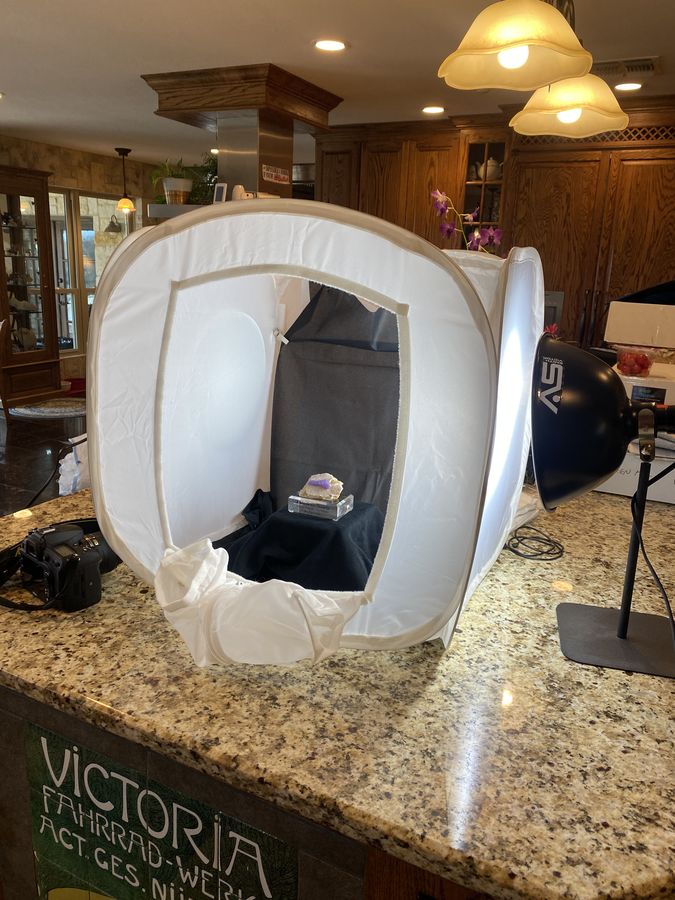
|
_________________
Minerals you say? Why yes, I'll take a dozen or so... |
|
| Back to top |
|
 |
Bob Harman
Joined: 06 Nov 2015
Posts: 765



|
 Posted: Feb 24, 2020 08:51 Post subject: Re: Taking great photographs Posted: Feb 24, 2020 08:51 Post subject: Re: Taking great photographs |
|
|
Mr. Lewinsky,
Gail and the other responders to your inquiry have given you very useful photography advice. Gail's setup is very appropriate for her minerals' general very hi qualities.
Some years ago, on another website, a question of mineral stands was asked. After some responses, photographs of very mediocre mineral specimens on very expensive stands were posted. The stands, rather than the mineral specimens themselves, became the focus. Not good.
Don't make that mistake. In mineral collecting, the mineral specimens themselves come first!
Expensive stands, expensive specimen preparations, and expensive photography equipment should be associated with worthwhile higher end mineral specimens. For "routine" specimens, perfectly good pictures can be taken without a lot of expensive photographic equipment.
I guess, for me, the bottom line is that I await some pix to see your quality specimens. BOB
|
|
| Back to top |
|
 |
Duncan Miller

Joined: 25 Apr 2009
Posts: 138
Location: South Africa



|
 Posted: Feb 24, 2020 10:27 Post subject: Re: Taking great photographs Posted: Feb 24, 2020 10:27 Post subject: Re: Taking great photographs |
|
|
This was my initial photographic set-up - wine box, tracing paper over cut-outs, Lumix point-and-shoot camera, sunlight outside. You may laugh, but with some computer tweaking the photographs were good enough to be published in an article in Lapis magazine.
I have graduated to the kitchen table, a Pentax DSLR with an old manual focus Macro lens, and a desk lamp with a frosted LED globe. The images still need some computer processing to correct the colour balance - not necessarily 'great' but they too are publishable. The manual focus lens really helps, and it's cooler working indoors in summer.
| Description: |
|
| Viewed: |
45288 Time(s) |
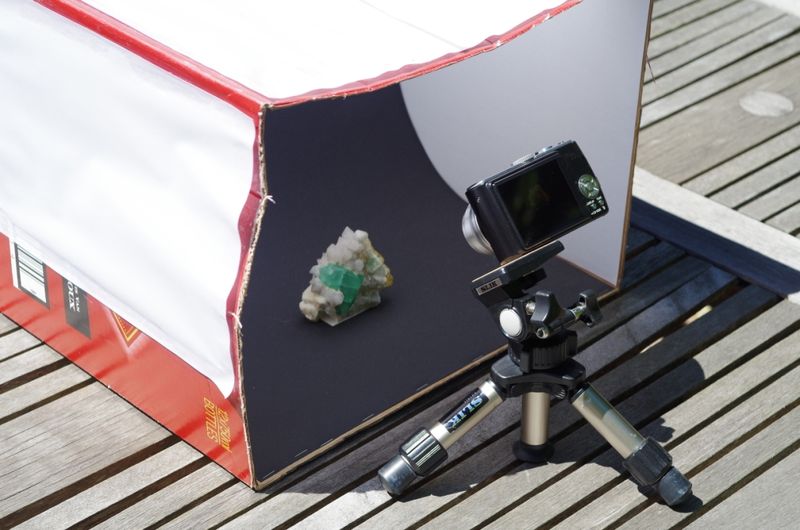
|
| Description: |
|
| Viewed: |
45264 Time(s) |
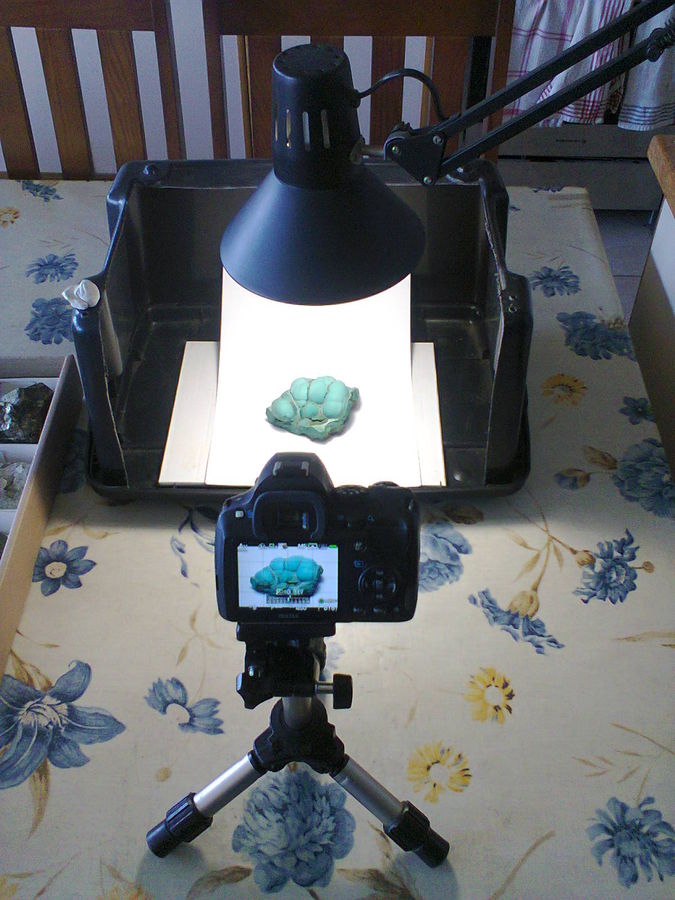
|
|
|
| Back to top |
|
 |
marvinlewinsky
Joined: 04 Feb 2020
Posts: 36
Location: Seattle


|
 Posted: Feb 24, 2020 13:34 Post subject: Re: Taking great photographs Posted: Feb 24, 2020 13:34 Post subject: Re: Taking great photographs |
|
|
| Gail wrote: | | In my kitchen |
Dear Gail
Many thanks for the photo. I have already ordered a light tent. BTW you are an inspiration to all mineral collectors who strive to build world-class collections.
Marvin
|
|
| Back to top |
|
 |
marvinlewinsky
Joined: 04 Feb 2020
Posts: 36
Location: Seattle


|
 Posted: Feb 24, 2020 13:35 Post subject: Re: Taking great photographs Posted: Feb 24, 2020 13:35 Post subject: Re: Taking great photographs |
|
|
| Bob Harman wrote: | Mr. Lewinsky,
Gail and the other responders to your inquiry have given you very useful photography advice. Gail's setup is very appropriate for her minerals' general very hi qualities.
Some years ago, on another website, a question of mineral stands was asked. After some responses, photographs of very mediocre mineral specimens on very expensive stands were posted. The stands, rather than the mineral specimens themselves, became the focus. Not good.
Don't make that mistake. In mineral collecting, the mineral specimens themselves come first!
Expensive stands, expensive specimen preparations, and expensive photography equipment should be associated with worthwhile higher end mineral specimens. For "routine" specimens, perfectly good pictures can be taken without a lot of expensive photographic equipment.
I guess, for me, the bottom line is that I await some pix to see your quality specimens. BOB |
Mr. Bob:
Thank you for your response. I do not recall mentioning mineral stands, but as my grandson is a professional cabinet maker, so I think I should come up with something just as good and a lot cheaper than any mineral stand that is commercially available. I have a few ideas for some novel stands myself. Starting materials are cheap, especially for someone who enjoys using their hands.
Regarding the fact that minerals come first, I think I have made it clear that one should focus on minerals with great eye appeal. Beauty is always exciting to the eye regardless of whether it is mineralogical, mechanical or biological.
I have no interest in specific localities, only those that afford great minerals. One vendor at Tucson had a Broken Hill Sphalerite for sale, and of course it came with a price tag containing one or two more zeros than was required. The selling point was the locality, but as an eye-catching mineral specimen it paled into insignificance compared with those from Peru, China, Bulgaria, Romania and Kosovo. I also have no interest in specimens that come with the label – great for the locality – just marketing tactics for mediocre specimens. The same can be said of some specimens from some UK, USA and Canadian localities. You see photographs of a lot of them on both FMF and Mindat.
Given just how cheap computers, digital cameras and electronic equipment are these days, especially if you buy direct from China as I do – your only limitation should be your imagination. The actual cost is trivial. I think if I am willing to spend $4000 on a mineral, the cost of a digital camera (cheap), or computer (cheap) or material (cheap) to make a stand is insignificant.
I could upload some photos of my ‘quality’ specimens right now, but I would need to get the approval of the vendor who sold them to me. I could also upload their videos too, but again I would need permission.
I will be uploading some of my photos of a world-class cabinet sized Chalcostibite from Romania, and a cabinet size Cassiterite with Quartz on matrix from Bolivia. The Chalcostibite is just amazing. The Bolivian piece has some phenomenal Cassiterite crystals to about 40 mm wide.
|
|
| Back to top |
|
 |
Gail

Joined: 21 Feb 2008
Posts: 5839
Location: Texas, Lone Star State.



|
 Posted: Feb 24, 2020 15:38 Post subject: Re: Taking great photographs Posted: Feb 24, 2020 15:38 Post subject: Re: Taking great photographs |
|
|
I use my iPhone 11 max constantly for mineral photos! It does an awesome job and it also has a decent editing program.
| Le Snelling wrote: | I don't know of any video. However, Jeffrey Scovil has produced a great how-to book entitled, "Photographing Minerals, Fossils, & Lapidary Materials". The publishers is Geoscience Press, Tuscon, AZ. ISBN 0-945005-21-0 (hardback).
It covers just about every aspect of still photography of minerals that you or I as amateurs could imagine.
Recently, I have been taking specimen photos for very general purposes with my iPhone 11 with rather good results. Not worthy of publication but they make me happy. Oh I can feel the affectionatos out there cringing and grinding their teeth.
Above all display and enjoy your minerals! |
_________________
Minerals you say? Why yes, I'll take a dozen or so... |
|
| Back to top |
|
 |
|





